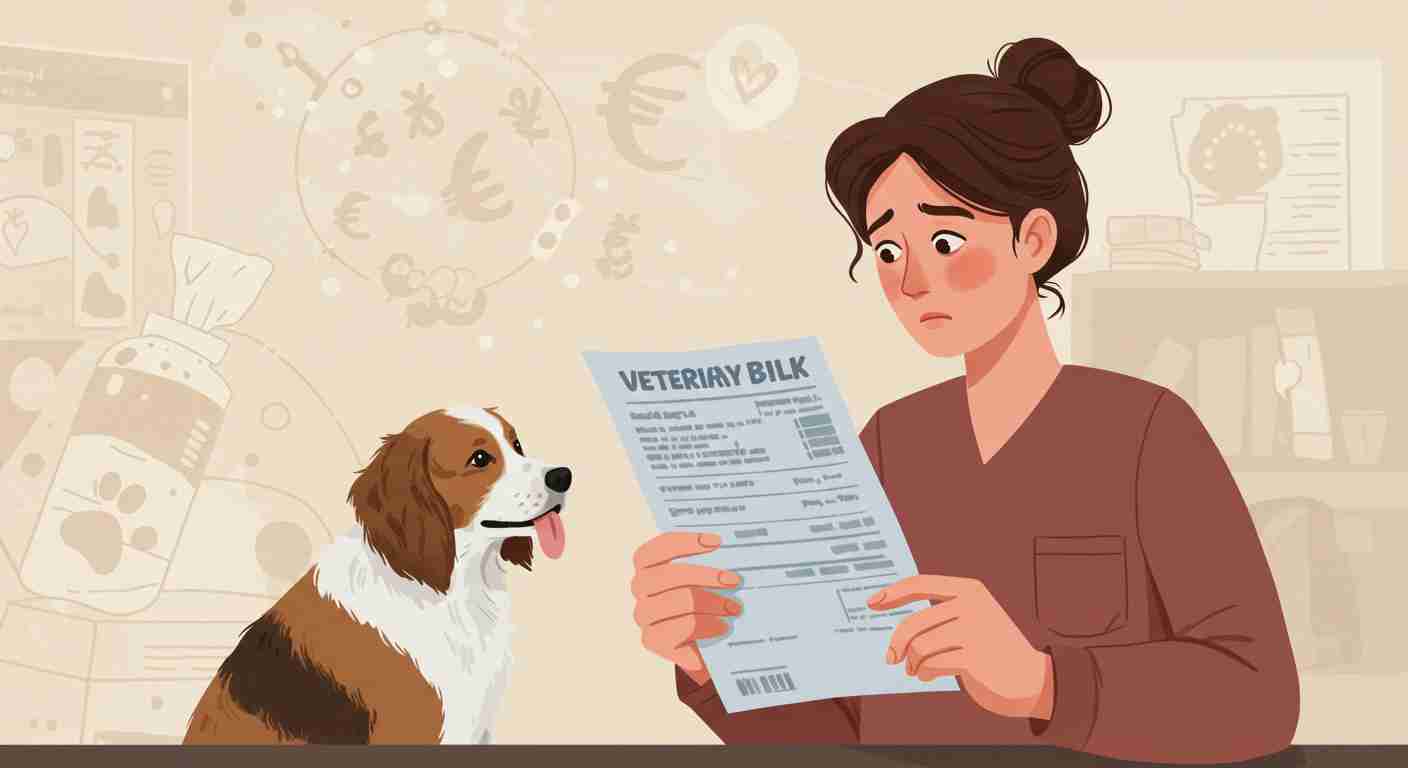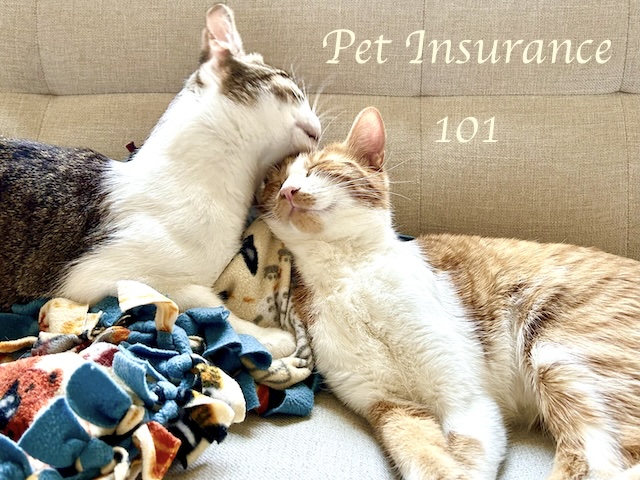
This article delves into the complex reasons for the rising cost of pet healthcare in the United States, including inflation, technological advances, rising labor costs, changes in clinic operating models, and increased costs of supplies and medications. The article notes that high costs have left many pet owners struggling to afford medical expenses, forcing them to forgo treatment or give their pets away. To address this challenge, the article offers a variety of strategies, emphasizing the importance of preventive care and suggesting that pet owners consider purchasing pet insurance, building emergency savings, seeking low-cost clinics, and financial assistance. The article also explores systemic challenges to addressing the problem, such as the shortage of veterinarians, and looks forward to the potential of government legislation, new practice models, talent development, and technological applications to increase access to pet healthcare. The article emphasizes the importance of open communication between pet owners and veterinarians and calls for a collaborative effort to ensure that all pets receive the medical care they need. The full article should take approximately 15 minutes to read.
The Complexity and Growing Challenges of Pet Healthcare Costs in the United States
Hugs! I know taking your pet to the vet is always filled with mixed emotions. On the one hand, you worry about their well-being and hope they get better soon. On the other hand, seeing that long bill can be a bit surprising, right? Unlike human health insurance, pet healthcare costs often directly reflect the full cost of providing the services and resources consumed. As you’d expect, from the doctor’s fees and lab tests to the surgery and medications, every single item is clearly listed on the bill, without any “hidden” subsidies or reimbursements to cushion the blow.
I recently came across some really heartbreaking data. A Gallup study revealed that over half of pet owners in the United States (52%) skipped or postponed their pet’s veterinary care in the past year due to cost. Of these, 37% had visited a veterinarian but abandoned recommended treatments due to cost concerns, while another 15% simply didn’t take their pet to the vet at all due to concerns about cost. You see, this isn’t a trivial issue; it’s truly impacting many families and their pets.
The ever-increasing cost of pet healthcare weighs heavily on pet owners, forcing them to make difficult choices between their pets’ health and their own financial means. Sometimes, they have to forgo optimal treatment opportunities. Sadly, some families ultimately find themselves unable to afford medical expenses and are forced to forgo treatment or even rehome their pets. These stories are heartbreaking.
There are many factors contributing to rising pet healthcare costs, including the ever-popular inflation, new medical technologies, and the impact of the COVID-19 pandemic. All of these factors have made care more expensive. Don’t worry, in the following pages, I, the editor of Healing, will discuss in depth the reasons behind these rising costs, their impact on pet owners, how we can address them, and potential future directions. I hope this discussion will provide some inspiration and warm support.
Dissecting pet healthcare costs: Why is it getting more expensive?
So, what exactly is it that makes these tiny lives require such expensive medical expenses? Don’t worry, the warm-hearted person will take you to uncover the secrets behind veterinary bills layer by layer.
First, we must understand that a veterinary bill is more than just a few minutes of consultation. It’s the product of a vast and complex operational system. As Dr. Lori Teller, a clinical professor at Texas A&M University, points out, whether it’s a regular clinic near home, a more advanced specialized hospital, or even a university teaching hospital, each is a complex system requiring significant resources to operate properly. Consider this: to provide the best care for your furry friends, a clinic requires spacious, bright exam rooms, clean operating rooms, a pharmacy stocked with a wide variety of medications, and sophisticated equipment like X-rays, ultrasounds, and even CT scans and MRIs. The purchase and maintenance of these hardware alone is a significant expense. Add to that the various medical consumables like syringes, gauze, and disinfectant, as well as utilities, rent, and other essential indirect costs of running a clinic. Dr. Teller emphasizes that these seemingly insignificant indirect costs actually account for the majority of a clinic’s revenue, and these costs are ultimately reflected in the bill we receive. So, when you see your bill, remember that it encompasses the support and protection provided by the entire clinic for your pet.
Next, let’s take a closer look at the specific cost drivers, which are like small gears that together push medical costs upward.
- Inflation and Macroeconomic Impacts: Oh, the word inflation is no stranger to everyone these days. It acts like an invisible force, quietly driving up prices for all kinds of goods. Veterinary services are no exception, with inflation rates even higher than those for general goods and services. Furthermore, the COVID-19 pandemic of the past few years has significantly impacted global supply chains and the economy, increasing the production and transportation costs of raw materials and equipment, which naturally feeds into veterinary clinic operating expenses. Data from Yahoo Finance shows that even when overall inflation has eased, the cost of healthcare services continues to climb.
- Technological Advances and Equipment Investment: Our lives are becoming increasingly convenient thanks to technological advancements, and this is no different for pet healthcare! Veterinary technology and treatments are advancing rapidly. Diseases that were previously untreatable are now better treated with advanced diagnostic equipment and treatments. For example, some specialized hospitals have introduced 3D printers, allowing for custom implants for animals; CT and MRI scanners provide clearer visualization of the internal organs; and new drugs, such as monoclonal antibodies, can more precisely target lesions. These high-tech applications have undoubtedly greatly improved diagnosis and treatment, extending the lives and improving the quality of life for pets. However, the development, purchase, maintenance, and use of these cutting-edge equipment and technologies require significant investment. The continued expansion of specialized hospitals and referral services, while providing higher-quality and more complex medical options, also comes with higher costs. This is similar to the cost of specialized outpatient clinics or advanced surgeries in human healthcare, which naturally incur higher costs.

- Labor costs: Veterinarians and their support teams, such as veterinary technicians and assistants, are the guardians of pet health and contribute a tremendous amount of knowledge, skills, and hard work. As the cost of living rises, their salaries and benefits must also increase to ensure their basic living needs and to attract and retain outstanding talent. Furthermore, the United States is currently facing a shortage of veterinarians, as reported by MarketWatch and Veterinary Practice News. When demand outstrips supply, labor costs will naturally rise. Imagine if there were not enough staff. Each doctor and technician would have a greater workload, and their professional skills and time would be more valuable, which would also affect the pricing of services.
- Changes in Clinic Operational Models: In the past, many pet owners purchased their pets’ medications and supplies directly from clinics, a significant portion of their revenue. However, with the rise of online pet pharmacies, many pet owners are choosing to purchase their pets’ medications and supplies online, often at lower prices than at clinics. This has led to a decrease in clinic pharmacy revenue. To offset this loss and address rising operating expenses, clinics may need to adjust their fee structures for other services, such as increasing treatment fees or other fees. This is a result of a combination of market competition and operational pressures.
- Supplies and medication costs: Finally, don’t forget about the medical supplies and medications we use every day. Sometimes there are supply chain issues or manufacturers adjust drug prices, and these costs will directly affect the clinic’s procurement costs and ultimately show up in the bills we pay.
So you see, every penny in a veterinary bill actually includes the cost of the clinic’s hardware investment, technological advancements, professional personnel, daily operations, and various consumables and medications. Understanding this may give us a more comprehensive understanding of veterinary services, no longer just focusing on “high prices” but instead distinguishing between expenses required to provide necessary care and those that are more advanced but may not be absolutely necessary. The editor of Healing hopes that these explanations will help you better understand why pet care is becoming increasingly expensive, and also let us see that behind those expenses is the hard work and investment made by the veterinary medical team for the health of our furry friends. Don’t be sad, understanding is the first step to solving the problem, right?
Now that we understand the reasons for the rising costs of pet healthcare, let’s explore how we, as pet owners, can proactively address these challenges and provide better protection for our furry friends.
Pet Owners’ Coping Strategies: Financial Planning and Cost Management
Dear friends, I know we can sometimes feel lost and helpless when faced with rising pet healthcare costs, and we might even have to make some very difficult decisions. Gallup research shows that financial constraints are the biggest barrier for many pet owners to care for their furry friends. Sometimes, simply because we can’t afford it, we have to postpone or even forgo treatment for our pets, leading to worsening conditions or even loss. Even more heartbreaking, some families are even forced to give their beloved pets up for adoption. Every time I hear such stories, my heart trembles. Don’t be sad, these difficulties are real, but please know that we are not alone in facing them. There are many ways and resources to help us better plan and manage pet healthcare costs. Here at Healing, I’d like to share some practical strategies you can try.
- Preventive care: Prevention is always better than cure! This may sound simple, but it’s the ultimate golden rule for saving money and, more importantly, keeping your pet healthy. As highlighted in reports from Texas A&M and MarketWatch, regular wellness exams, vaccinations, deworming, and dental care—preventive measures like a protective shield for your pet—help veterinarians identify potential problems early, making many illnesses easy and inexpensive to treat. Waiting until a serious condition develops can lead to complex, expensive surgery or long-term medication. Consider this: the cost of annual checkups and vaccines pales in comparison to the cost of treating advanced cancer or severe heart disease. Furthermore, many clinics now offer flexible options, such as quarterly or monthly single doses of preventative medication, minimizing the upfront expense.
- Pet insurance: Protecting against the unknown. Pet insurance is like your own health insurance. While you pay a monthly premium, it helps cover the majority of medical expenses if your pet becomes ill or has an accident. Both the WSJ and Bankrate articles detail how pet insurance works. It’s typically a reimbursement model, meaning you pay your veterinary bills first and then file a claim with the insurance company. There are many types of pet insurance, ranging from accident-only policies to comprehensive policies that cover both accidents and illnesses. Some even offer add-on health care plans to cover some of the costs of routine checkups and vaccinations. It’s important to purchase pet insurance as early as possible, as most policies don’t cover pre-existing conditions—meaning they won’t cover conditions that existed before purchasing the policy or during the waiting period. Premiums will be affected by factors such as your pet’s breed, age, location, and the selected benefit ratio, deductible, and annual limit. The claims process can be somewhat complex, and there are common exclusions to be aware of, such as grooming and breeding expenses. The WSJ article reviews several well-known pet insurance companies. You can refer to them and choose the best plan for your pet’s needs and budget. Some veterinary clinics may also have partnerships with specific insurance companies, offering more convenient claims processing. Having pet insurance can alleviate significant financial burdens at critical moments, giving you greater confidence in choosing the best treatment for your pet.
- Emergency savings and payment plans: Double protection for peace of mind. In addition to insurance, setting up a dedicated pet emergency savings account is a wise choice. Saving a little each month can add up to a significant amount in an emergency. As Dr. Lori Teller suggests, even a small monthly contribution can help you in an emergency. If you face a large medical bill and can’t pay it in full, consider third-party financing services such as Care Credit or ScratchPay. These are like credit cards specifically for medical expenses, allowing you to pay the bill in installments. Humaneworld and Gallup both mention these options, and some veterinary clinics also offer installment plans directly. When using these services, be sure to carefully understand the repayment terms and interest rates, especially those that may incur high late fees or retroactive interest. Use them with caution to avoid falling into debt.
- Seek low-cost options and financial assistance: Resources are all around you. Don’t assume you can only go to expensive, large hospitals for medical care; there are actually many low-cost options to consider. You can look for low-cost clinics in your community or animal shelters offering discounted services. Veterinary teaching hospitals often have low-cost clinics open to the public, where experienced veterinarians and students work together to treat your pet, and the quality is guaranteed. If it’s convenient for you, going to areas with lower medical costs may also help you save some money. What’s more, there are many non-profit organizations and foundations that specialize in providing financial assistance for medical care to pet owners in need. The Humaneworld article lists many such organizations, both national and local. Be brave and explore and apply; these caring organizations truly want to help pets and their owners in need.
- Open communication with your veterinarian: Build trust and develop a plan together. I know we can sometimes be embarrassed to talk to our veterinarian about costs, but dearly, please be honest with your veterinarian about your financial situation. Dr. Lori Teller and other experts recommend asking your veterinarian for a detailed cost estimate before deciding on a treatment plan, and boldly discussing different treatment options and their cost differences. Tell your veterinarian your budget range, and ask them to help you prioritize the most necessary and most relieving treatments within your budget. A good veterinarian will understand your difficulties and work with you to find the most appropriate solution, rather than blindly recommending the most expensive option. Open communication is the foundation for building trust and working together for your pet’s health.
- Take advantage of discounts and offers: Don’t underestimate these little perks. Many veterinary clinics actually offer discounts and offers you might not know about! This Investopedia article covers many of them. For example, referring new clients might earn you a referral discount; during certain seasons or holidays, the clinic might offer promotions; as a first-time client, you might be eligible for discounts; some clinics offer preventive care packages that are more cost-effective than individual services; if you have multiple pets, ask about multi-pet discounts; and becoming a loyal client of a clinic and joining their loyalty program might earn you points or discounts. So, next time you visit the veterinarian, why not politely ask, “Are there any discounts or offers available?” You might be in for a surprise!
Dear friends, facing the high costs of pet healthcare does present many challenges, but remember, we are not alone. By proactively planning our finances, leveraging tools like preventative care, pet insurance, and emergency savings, proactively seeking low-cost options and financial assistance, and maintaining open communication with our veterinarians, we can more confidently navigate these challenges. These strategies may not completely eliminate financial stress, but they can help you provide your beloved furry friends with the care they need, to the best of your ability. Everything will be alright, and may you always be happy.
Systemic challenges and the future of veterinary care
The editor of Healing knows that although we have been trying to manage personal pet medical expenses in various ways, to fundamentally solve the problem, we need to look at the deeper systemic challenges together and look forward to the future development direction together.
First of all, we cannot ignore the huge problem of the shortage of veterinarians in the United States. As we mentioned earlier, the shortage of staff not only affects the efficiency of veterinary services, but also pushes up labor costs to a certain extent, which will ultimately affect the fees that our pet owners need to pay. What is even more troublesome is that many places now seem to lack a “middle-level” care option. What does that mean? It is between basic routine care and very expensive specialist care, and there are not enough options. Sometimes, the pet’s condition may not require going to a top specialist hospital, but it cannot get enough help in ordinary clinics. At this time, it is difficult for pet owners to find a solution that can meet their medical needs and is financially affordable, which will make everyone more entangled when making a decision.
But don’t be discouraged, people haven’t stopped exploring and innovating, and many places are actively looking for solutions. Let’s take a look at some of the positive changes taking place and possible future development directions:
- Government legislation and policy: This is a very powerful direction! Have you heard? The US Congress is currently considering a proposal called the PAW Act (HR 9508). If passed, this bill would allow individuals to use their Health Savings Accounts (HSAs) or Flexible Spending Accounts (FSAs) to pay for pet medical expenses and pet insurance, up to $1,000 per year (citing information from the AVMA). This is absolutely great news for many families and can significantly reduce the financial burden. In addition to federal efforts, some states are also taking proactive action. For example, Delaware has already enacted law to reimburse the medical expenses of retired police dogs, demonstrating community support for animals that have made special contributions.Looking at other countries may offer some inspiration. Germany has a government-regulated veterinary fee model called GOT (Gebührenordnung für Tierärzte) (cited from VIN News). This model regulates the fee range for various veterinary procedures, sets a minimum fee, and caps maximum fees (usually three times the basic fee and four times for emergency cases). Supporters argue that this model ensures veterinarians receive a reasonable minimum income while protecting pet owners from overcharging. Of course, it also has some drawbacks, such as the potential for limiting market competition and the need for regular adjustments to keep pace with inflation and technological advancements. In countries like the UK, there are also discussions about veterinary price transparency and fee caps. While Germany’s GOT model may not be replicated in the United States, its concepts of ensuring a minimum fee, capping maximum fees, and promoting price transparency may offer some insights for US policymaking.
- New practice models: making medical care more flexible and convenient! The veterinary industry is constantly innovating its service models to make pet healthcare more accessible. An approach called Stratified Practice Models is being adopted by a growing number of clinics. This model allows cases of varying complexity to be directed to the most appropriate resources. For example, simple routine examinations can be completed at a primary care clinic, while more complex cases are referred to more fully equipped facilities. Establishing referral lists and utilizing telemedicine for initial consultations or follow-up visits can improve efficiency, saving time and costs.In addition, some emerging practice models are flourishing (citing information from dvm360), such as vaccination clinics that specialize in vaccinations, centers that can perform outpatient surgeries, and urgent care centers that only handle emergency situations. The emergence of these models has greatly expanded the scope of veterinary services, especially for pet owners who may not be able to afford a full range of services but need specific care (such as vaccines), providing more affordable options.
- Education and talent development: Address the shortage at its source! To alleviate the veterinary shortage, the most fundamental solution is to train more veterinarians. The good news is that many new veterinary schools are currently being planned or constructed (according to Veterinary Practice News), which is expected to increase the number of veterinarians in the future.In addition to increasing the number of veterinarians, some places are also exploring the introduction of new auxiliary roles. Colorado is trying to introduce a new role of “Veterinary Professional Assistant” (VPA) (quoted from Veterinary Practice News). They will receive certain training and can take on some work under the guidance of veterinarians. Supporters believe that this can effectively relieve the pressure on veterinarians, improve clinic efficiency, and may reduce the cost of some services. However, there are also opponents who worry that VPA’s training is not as comprehensive as veterinarians, which may affect the quality of medical care, as well as related responsibilities and regulatory issues. It will take time to observe the effectiveness of this attempt, but it at least provides a new idea to alleviate shortages and explore more efficient service models.
- The Role of Technology: When AI Meets Pet Healthcare! The term artificial intelligence (AI) is becoming increasingly common, and its application prospects in the veterinary field are also expanding (quoted from Veterinary Practice News). Imagine a future where AI could assist veterinarians with imaging diagnoses, identifying problems more quickly and accurately. It could also automate administrative tasks like appointment management and billing, freeing veterinarians and technicians to focus on the actual care. It could also optimize medical records, making them more complete and easier to retrieve. The application of these technologies can help veterinary clinics improve efficiency. While this may not directly reduce the cost of a single visit, it could indirectly have a positive impact on overall operating costs and efficiency.
Dear friends, addressing the issue of pet healthcare accessibility is not something that can be accomplished by any one party alone. It requires the joint efforts of pet owners, the veterinary industry (including clinics, insurance companies, and associations), policymakers, and the entire community.
The most important thing we can do as pet owners, beyond the financial planning and cost management we’ve discussed earlier, is to remember the importance of preventive care . It’s the most effective and cost-effective long-term strategy. Maintaining open and honest communication with your veterinarian is also crucial to managing medical expenses. Don’t be afraid to ask questions or discuss your budget; it’s for your pet’s and your own good.
Finally, I, the editor of Healing, would like to express my hope that society will pay more attention to the issue of pet healthcare accessibility and encourage everyone to explore more innovative solutions. Only in this way can we ensure that all pets, regardless of their families’ financial circumstances, can receive the medical care they deserve when they need it. After all, our furry friends are our family, and their health and happiness are our shared aspirations.
The road ahead may still be challenging, but with love and hope, we will surely find a better way. Everything will be alright, and warmth will always be there.



